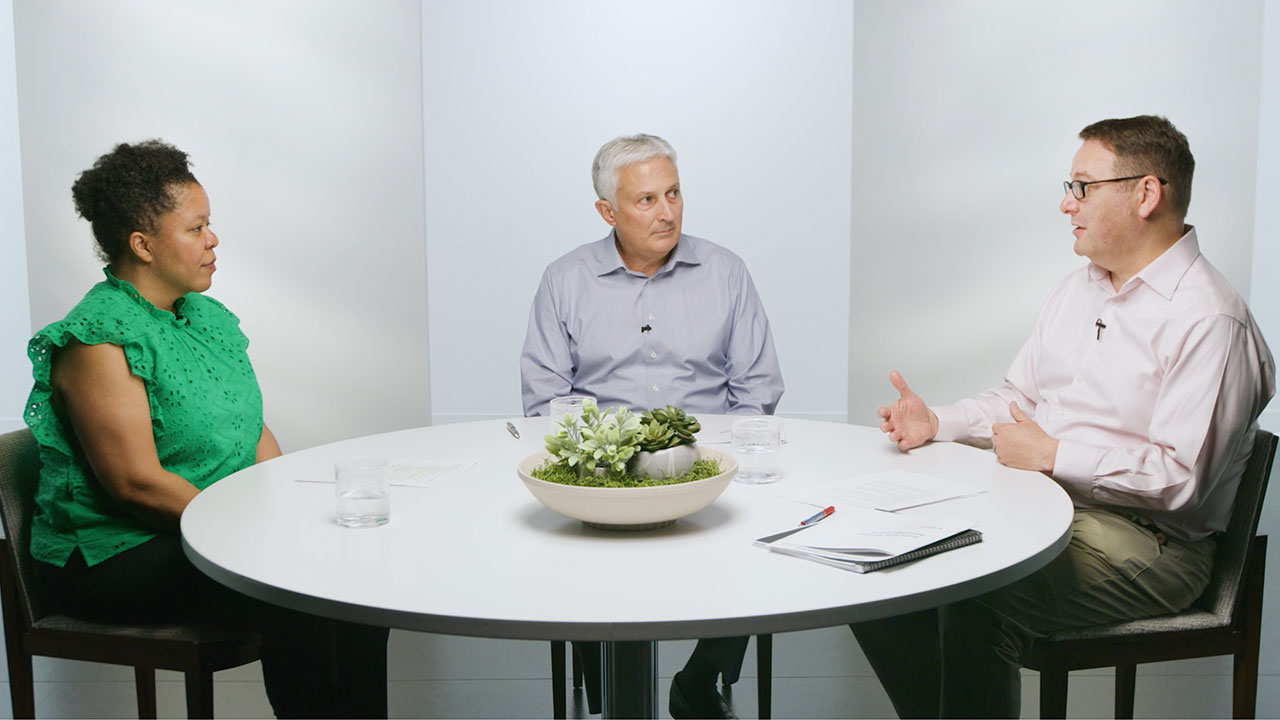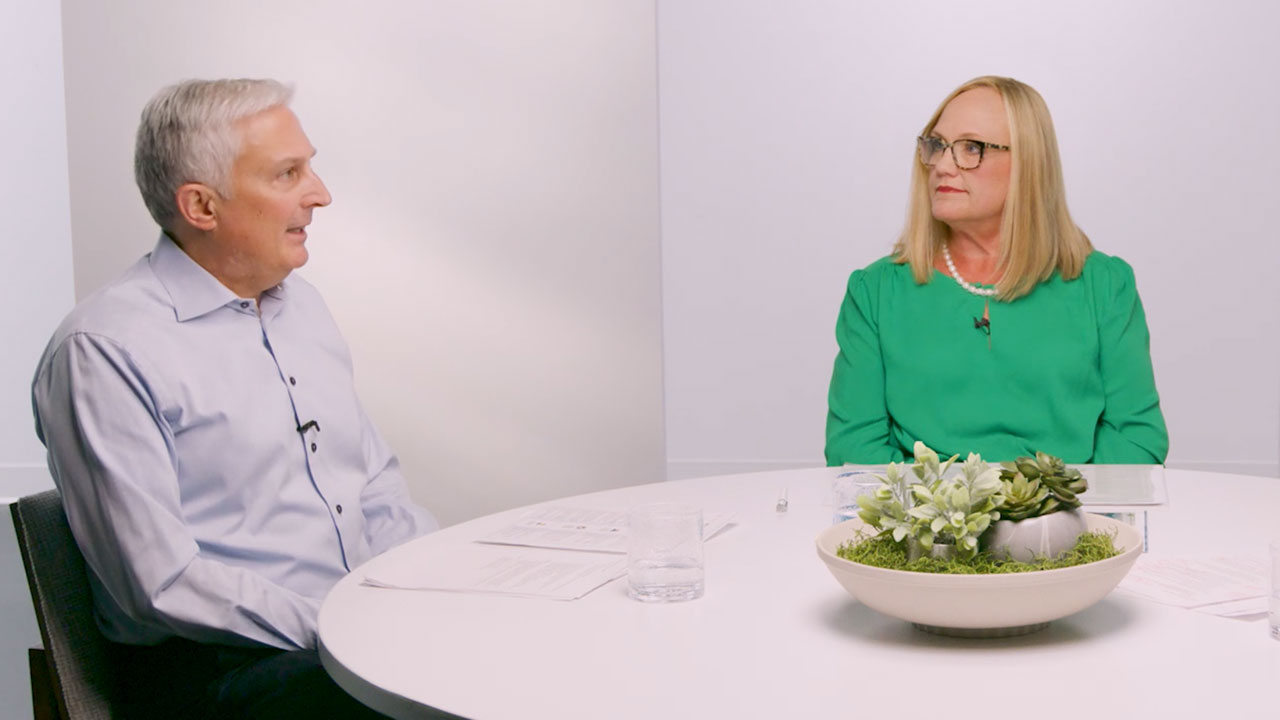You Choose: On-Demand, Facilitated or Some of Each
For each topic in Quick Start, there is a on-demand and a facilitated option. You can even do a combination of both. Regardless of which you choose, the key points and learning objectives are the same, so choose the approach that works best for you.
One last thing…Quick Start is not a sprint! You are encouraged to take time between topics to digest the content, talk with your supervisor and others who can help you learn, and apply the principles.
On-Demand
PRINCIPLE-BASED VS. RULE-BASED
At Koch, our principles guide everything including visions, strategies, policies, practices, partnerships, investments and performance evaluations. These principles encourage entrepreneurship, discovery and transformation. They apply universally, whereas detailed rules and methods only work in specific applications under certain conditions, and even then tend to stifle motivation and creativity.
A principle-based approach is not an absence of rules. But when policies, processes or procedures are necessary, they must be judged against general principles. We expect them to be continually challenged and improved – or eliminated when they undermine progress.
Why Is This Important?
Having a principle-based approach frees everyone to think and innovate – to develop different methods and solutions – rather than mindlessly follow instructions. It creates an environment where every employee knows what to do to maximize value creation and is motivated to do it without being told. Applying principles requires employees to be collaborative and use their judgment.
Understand It Better
Examples
These examples show what someone might think or say if they have a principle-based approach or rules-based approach to their work.
- Routine Work
- Poor Results
- Good Results
- Something Unexpected
Rule-Based Approach
“This step seems unnecessary, but it’s what they told me to do.”
Principle-Based Approach
“This step seems unnecessary. Help me understand the purpose of this procedure and the importance of this specific step.”
Give it a Try
The power of Principle Based Management happens through application. Discussing and exploring the principle with others is one way to get started.
Want to Join a Facilitated Session About This?
THE FIVE DIMENSIONS
The five dimensions provide an organizing structure for applying the principles of human progress to enable every employee to succeed long term by creating superior value for others.
The Vision Dimension helps you connect to the team/organizational vision.
The Virtue and Talents Dimension helps you self-actualize and become more contribution motivated.
The Knowledge Dimension helps you learn and improve and succeed in a rapidly changing world.
The Comparative Advantage Dimension helps you pursue work you are good at and care about and collaborate with your co-workers to maximize overall results.
The Motivation Dimension helps you maximize your contribution to the team and Koch’s long-term success by realizing your potential.
Everyone Can, and Should, Apply the Five Dimensions - Unscripted
Leaders describe how applying all five dimensions is how we get work done, not something extra to do.
Examples
Principle Based Management, organized by the five dimensions, is not separate from our work, it’s how we work! Here are some examples of what this can look like.
- Connecting to Vision
- Improving Team Effectiveness
- Starting Something New
- Solving a Problem
Ayla discusses the Vision Dimension questions in the “Using the Five Dimensions to Identify and Close Gaps” tool with her supervisor and teammates. As a result, she has a better understanding of what her team is trying to accomplish. Ayla finds she has better ideas for improving team processes and what skills she wants to sharpen since the discussion.
Key Resources That Can Help You Apply the Five Dimensions:
Give it a Try
The power of Principle Based Management happens through application. Discussing and exploring the principle with others is one way to get started.
Want to Join a Facilitated Session About This?
MUTUAL BENEFIT
This principle guides us to take a win-win approach in all we do. It goes beyond a simple transaction that benefits both parties – it's a proactive mindset that causes us to seek out relationships and opportunities where we can succeed by benefiting others. When we do this while consuming fewer resources, our profit is a result of benefiting our customers and society. This principle also guides us to avoid situations where one party benefits at the expense of others (win-lose).
Why Is This Important?
Mutual benefit is foundational to the role of business in society and Koch’s Vision. It is the only way to succeed long-term. That is why we pursue mutually beneficial relationships with all core constituencies – employees, customers, suppliers, partners, communities and governments. We seek to understand what they value and then cooperate with them to achieve mutually beneficial outcomes. Trust is the foundation for such relationships.
Some of our most important constituencies are customers and employees. These two videos explore how we pursue mutually beneficial outcomes and relationships.
Customers
Ever notice that you and the seller say “thank you” when you buy something? This video shows how mutual benefit plays out for customer and supplier.
Employees
The old cliché is true: Good people are a company’s most valuable resource. Hear leaders discuss some ways we strive for mutual benefit with each employee.
Examples
Applying the principle of mutual benefit requires us to have a win-win mindset – one where we seek situations where both parties win. This is in contrast with a win-lose mindset, which is rooted in the belief that for one party to win, others must lose. These examples show what someone might think or say if they have a win-win mindset or win-lose mindset.
- Customer Relationship
- Employee Relationship
- Supplier Relationship
Win-Win
“One of our customers asked us if we could load the trucks differently, so they can unload easier. I’m going to explore that with our shipping team and see what’s possible. Then, I can go back to the customer with more information and show them we’re interested in helping them figure this out even if this isn’t the solution.”
Win-Lose
“One of our customers asked us if we could load the trucks differently, so they can unload easier. Do they realize what trouble that causes us? Don’t just tell them ‘No,’ make sure they know that our loading system is optimized for efficiency.”
Give it a Try
The power of Principle Based Management happens through application. Discussing and exploring the principle with others is one way to get started.
Want to Join a Facilitated Session About This?
RESPECT – TREATING PEOPLE AS INDIVIDUALS
Respect is more than being polite. Being kind and treating one another well is important, but our principle of respect is much deeper than that. An important element of this principle is treating people as individuals.
“Wherever a paradigm of respecting each person as an individual is embraced, there are much greater levels of freedom, peace, civility, trust and human progress. Treating everyone with dignity and respect not only leads to better outcomes, it is the right thing to do.” (Principle in Brief: Respect)
Take a look at the chart below. For each situation, which would you prefer?
| A | B | |
|---|---|---|
| Job Duties | You work with your supervisor to customize your work to fit your aptitudes and the business needs. | Your tasks and responsibilities are identical to everyone who has the same job title. |
| Feedback | You are given honest, specific and individualized feedback about your performance. | Your performance is reduced to a generic, annual rating. |
| Working Together | You and your co-workers are encouraged to offer ideas, solve problems, innovate and think for yourselves. | Only employees in certain positions are expected or asked to offer ideas, solve problems and think for themselves. |
| Development | You are encouraged to know your strengths and limitations and develop a perspective on how you can improve and increase your contribution. | You are directed to develop based on a pre-determined career path and/or set of activities. |
Your performance is reduced to a generic, annual rating.
Which column did you choose most? Watch the video below to see how the two columns differ and which one best represents how Koch Companies try to do things!
Examples
Respecting each person as an individual informs how we approach roles, employee development, compensation, decision-making authority and many other practices. Here are some examples of practices that respect each person as an individual contrasted with practices that that don’t respect each person as an individual.
- Responsibilities
- Decision Rights
- Building Skills
- Rewards
Practices that respect each person as an individual
Arjun is one of several Quality Assurance Engineers. Arjun and his supervisor discuss the responsibilities he does well and areas where he is weakest. After having a similar discussion with each team member, Arjun’s supervisor decides to make some adjustments. As a result, Arjun has more responsibilities where he is gifted, and others do as well. Each person on the team is more specialized and overall team results are better.
Practices that don’t respect each person as an individual
Arjun is given a job description for Quality Assurance Engineer, which is the primary resource for understanding the tasks and expectations of EVERYONE in this role. Arjun finds himself focusing on the parts of the job where he is weakest because there’s no flexibility in the responsibilities of a Quality Assurance Engineer.
Important Note: Practices that don’t respect each person as an individual often value the efficiency of a one-sized-fits-all approach or assume people can or cannot do something based on a general characteristic. Such practices create barriers that exclude or limit people. Not only do we try to avoid these practices, we actively pursue approaches that respect each person as an individual and empower everyone to more fully develop and apply their abilities.
Give it a Try
The power of Principle Based Management happens through application. Discussing and exploring the principle with others is one way to get started.
Want to Join a Facilitated Session About This?
CONTRIBUTION MOTIVATED
When you are contribution motivated, you seek to discover, develop and utilize your abilities to succeed by helping others improve their lives. You are energized by creatively getting results which enables you to live a life of meaning.
Why Is This Important?
To be successful, we need employees who are motivated to maximize their contribution to Koch’s long-term success, exemplify Our Values and have abilities that are additive to the team.
We strive to hire and retain people who are contribution motivated first and foremost – and reinforce that motivation through individualized roles and responsibilities, coaching, development and rewards.
Contribution Motivated - Unscripted
Leaders discuss what it means to be Contribution Motivated and the importance of feedback.
Understanding What it Means to Be Contribution Motivated
Below is a tool we call "Motivations and Behaviors for Organizational and Individual Success." It clearly articulates differences in thinking, behaviors, and attitudes between people who are primarily contribution motivated and the alternative - what we call being primarily deficiency motivated.
| People Who Are Contribution Motivated... | People Who Are Deficiency Motivated... | |
|---|---|---|
| Being Self-Aware | Recognize what they are and are not good at (reality-based view). Prefer meaningful work. Have personal values of integrity and humility. Know when they need help and ask for it, especially with compliance. | Don’t believe they can contribute. Are overconfident in their abilities. Are extremely sensitive to feedback and criticism. |
| Striving to Realize Potential | Are lifelong learners – are curious, seek feedback and demonstrate courage in learning their talents and what they are passionate about. Define success as making a positive difference for others. Seek responsibilities that align with how they can contribute the most. | Are passive (want to be told what to do, don’t think for themselves). Are comfortable with the status quo; find excuses for not changing or improving. Measure success in comparison to others (money, status, pedigree, titles, etc.). |
| Seeking Mutually Beneficial Results | Are intentionally inclusive, treat everyone with respect, and collaborate and work well with others. Proactively share knowledge and ideas, provide and solicit challenge, develop knowledge networks, and build trusted relationships. Work in a mutually beneficial way to drive results for the company and key constituents to create the greatest long-term value. | Believe everything is a competition and have a win-lose or silo mentality. Game the system, take shortcuts, don’t share information. Try to succeed at the expense of others. Blame others for failures and mistakes. (When it doesn’t work out, “It wasn’t my fault.”) |
| Contributing Creatively | Demonstrate courage in dealing with the unknown and challenging situations (problems, change, new opportunities). Have grit, resilience, and can-do attitude. Always push to find new and better ways to do things. Focus on results and outcomes. | Go through the motions, have weak work ethic, avoid responsibility and accountability. Are protectionist, resist change, and have a “not-invented-here” mentality. Quick to complain rather than finding, recommending, and implementing solutions. |
Recognize what they are and are not good at (reality-based view). Prefer meaningful work.
Have personal values of integrity and humility.
Know when they need help and ask for it, especially with compliance.
Don’t believe they can contribute.
Are overconfident in their abilities.
Are extremely sensitive to feedback and criticism.
Are lifelong learners – are curious, seek feedback and demonstrate courage in learning their talents and what they are passionate about.
Define success as making a positive difference for others.
Seek responsibilities that align with how they can contribute the most.
Are passive (want to be told what to do, don’t think for themselves).
Are comfortable with the status quo; find excuses for not changing or improving.
Measure success in comparison to others (money, status, pedigree, titles, etc.).
Are intentionally inclusive, treat everyone with respect, and collaborate and work well with others.
Proactively share knowledge and ideas, provide and solicit challenge, develop knowledge networks, and build trusted relationships.
Work in a mutually beneficial way to drive results for the company and key constituents to create the greatest long-term value.
Believe everything is a competition and have a win-lose or silo mentality.
Game the system, take shortcuts, don’t share information. Try to succeed at the expense of others.
Blame others for failures and mistakes. (When it doesn’t work out, “It wasn’t my fault.”)
Demonstrate courage in dealing with the unknown and challenging situations (problems, change, new opportunities).
Have grit, resilience, and can-do attitude.
Always push to find new and better ways to do things. Focus on results and outcomes.
Go through the motions, have weak work ethic, avoid responsibility and accountability.
Are protectionist, resist change, and have a “not-invented-here” mentality.
Quick to complain rather than finding, recommending, and implementing solutions.
Examples
These contrasting examples can help you better understand what it looks like when someone is contribution motivated, and when they are not.
- Day-to-Day Work
- Dealing with the Unknown
Contribution Motivated
Lee is an environmental engineer whose team recently finished a large project updating the facility's watershed and irrigation equipment. Lee proactively talks to his supervisor to discuss other ways to contribute. In the near term, he uses some of this "downtime" to get current on the newest water quality measures.
Deficiency Motivated
Lana is a data analyst who recently finished automating measurement reports. She now has some "free time" while waiting for her supervisor to provide the next assignment. Lana uses the time to get caught up on her personal email and plays on her phone a lot.
Give it a Try
The power of Principle Based Management happens through application. Discussing and exploring the principle with others is one way to get started.
Want to Join a Facilitated Session About This?
CHALLENGE
We define challenge as continual questioning and brainstorming to find a better way. Doing this well involves offering ideas, asking questions and listening when others do the same. Challenge is an opportunity to learn, not a chance to dismiss another person’s idea or show off.
Why Is This Important?
Imagine a team where everyone feels comfortable offering new and diverse ideas – even when they are radically different. They freely raise concerns and engage in productive discussions – even when it’s uncomfortable. Leaders aren’t just willing to hear concerns and ideas – they actively invite them. Such a team is more likely to foster innovation, effectively solve problems and create value for the company, customers and society.
Examples
One part of challenge is offering ideas and asking questions. Another part is reacting appropriately when others ask you questions and offer suggestions. Below are some examples that give you a sense of how important it is that we’re all good at both.
- Offering Challenge
- Accepting Challenge
Positive Example
During a shift meeting, Wyatt learns that line 7 is experiencing downtime due to conveyor issues. Wyatt recalls a similar problem from his previous job and shares the solution with the lead maintenance technician. While today's situation is somewhat different, the conversation sparks ideas that eventually lead to a fix.
Negative Example
Winona hears about line 7 issues in the shift meeting and thinks: "This sounds like the problem we had on line 2 several years ago." She decides not to say anything because she worries about losing credibility if she's wrong. Several weeks after the problem is fixed, Winona realizes she could have saved the team a lot of work by speaking up.
Challenge in Your Everyday Work
Sometimes new employees are surprised that challenge is more than encouraged – it's expected! In this video, listen to leaders talk about how supervisors create an environment where challenge is a regular part of how teams interact with one another:
Encouraging and Expecting Challenge - Unscripted
All of us, but especially supervisors, need to create an environment where everyone's ideas and concerns are valued.
Give it a Try
The power of Principle Based Management happens through application. Discussing and exploring the principle with others is one way to get started.
Want to Join a Facilitated Session About This?
WHAT'S NEXT?
Give it a Try
The power of Principle Based Management happens through application. Discussing and exploring the principle with others is one way to get started.
Keep Learning
Learning and applying PBM is on-going! Visit this website occasionally to find new content and learning opportunities.








